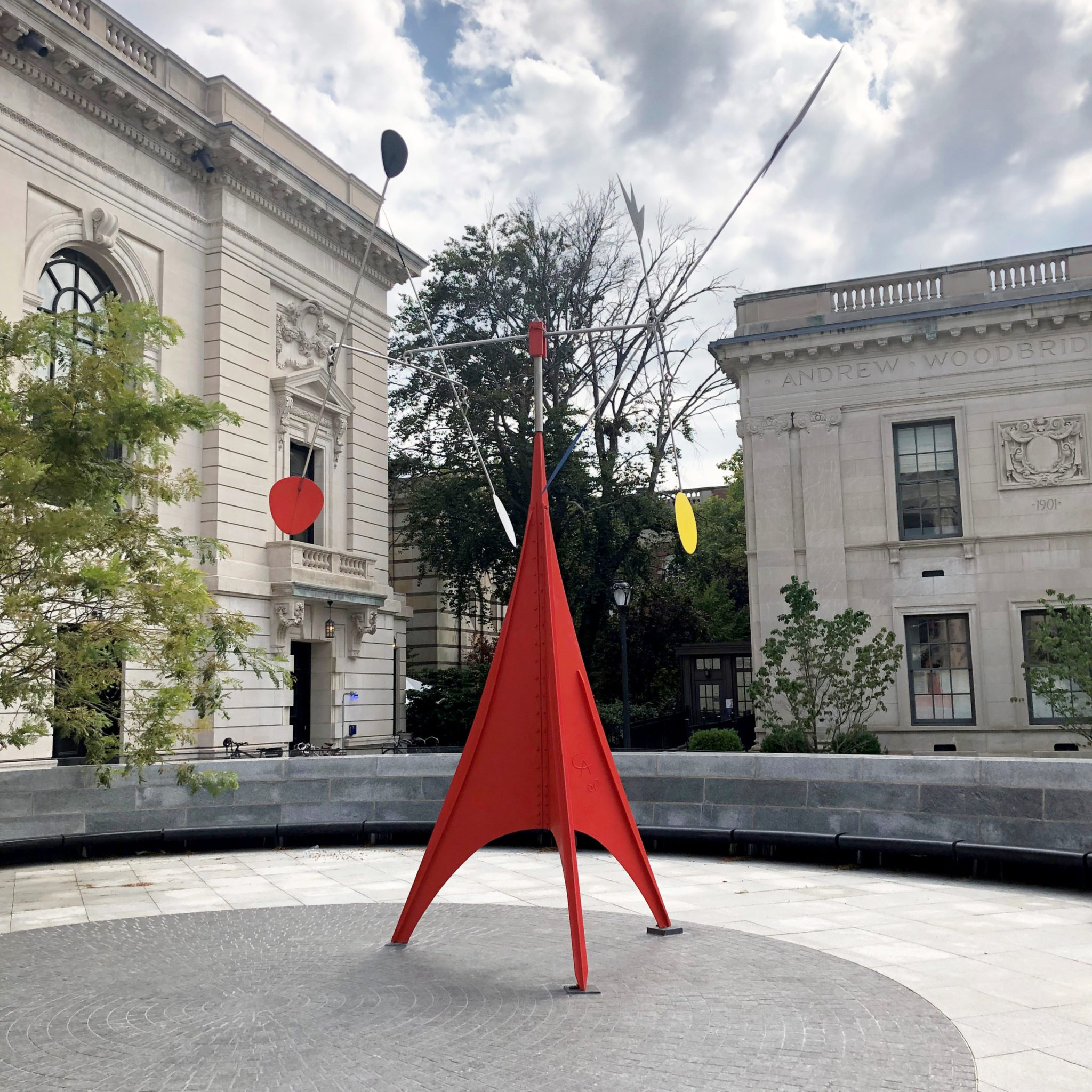Colorful Calder sculpture returns to Beinecke Plaza
After residing in the Yale University Art Gallery sculpture garden for three years, American sculptor Alexander Calder’s sculpture “Gallows and Lollipops” was moved back to the Hewitt Quadrangle — commonly known as the Beinecke Plaza — on Sept. 8.

Courtesy of Maurice Harris
After residing in the Yale University Art Gallery sculpture garden for three years, American sculptor Alexander Calder’s sculpture “Gallows and Lollipops” was moved back to the Hewitt Quadrangle — commonly known as the Beinecke Plaza — on Sept. 8.
Before construction for the Schwarzman Center began in August 2018, the sculpture was disassembled, removed from the plaza and reinstalled at the sculpture garden. But for decades prior, “Gallows and Lollipops” stood on Beinecke plaza, where its steel plates and eye-popping colors stood against the white-grey marble grid of the Beinecke Rare Book & Manuscript Library. The sculpture, which Calder created in 1955, was first given to the University by anonymous donors in 1975. The sculpture is a mobile — a type of sculpture invented by Calder that is made of hanging components that move in response to air or other stimuli. Now, it returns to the plaza after a three-year absence.
“Because the Calder was removed for much of the renovation, many students may be seeing it for the first time this fall,” said Garth Ross, executive director of the Schwarzman Center. “With its reinstallation on Hewitt Quadrangle, the Calder invites interpretation from a new generation of thinkers. It’s a conversation starter positioned right next to a Center designed to bring people together to share a broad range of experiences and ideas.”
The sculpture is visible across Hewitt Plaza as students approach Memorial Hall. According to Mark Mitchell, Holcombe T. Green curator of American paintings and sculpture, the artwork animates the space with a “levity and playfulness” characteristic of the artist’s work. Not only is it painted red, blue and yellow — starkly contrasting the plaza and surrounding buildings, which are shades of white and gray — but the sculpture also spins in the air.
Lucy Mulroney, associate director for collections, research and education at the Beinecke, said the plaza has “really come alive” with the reinstallation of the sculpture.
“I absolutely love seeing everyone sitting and talking, eating lunch, even holding class outside on the plaza around the Beinecke — the playful Calder sculpture adds a pop of color to the scene and conveys that this is a space for everyone to enjoy and linger in,” Mulroney said.
Calder’s early work was marked primarily by brush drawings and illustrations as well as projects using sheet metal and wire. When Calder moved to Paris in 1926, he began creating works from wire in three-dimensional portraits.
In October 1930, Calder visited Dutch abstract painter Piet Mondrian’s studio where he took inspiration from the artist’s atmospheric installation. Calder then invented kinetic sculptures — now called “mobiles,” a term coined by artist Marcel Duchamp — and created “Gallows and Lollipops” in this style.
Some of Calder’s early mobiles were powered by motors, but over time, he turned towards sculptures without motors that responded to natural stimuli like air.
“Gallows and Lollipops” moves in response to air currents in the Beinecke Plaza. Mitchell said the result is a joyous one.
“As his art does in public spaces all around the world, Calder’s colorful, playful mobile brings its staid surroundings to life,” Mitchell said. “It’s the first one on the dancefloor — whirling, waving and swaying — and it breaks the ice, inviting us to join in.”
Prior to its donation to Yale, the sculpture was known as “Lollipops” or “Lollypops.”
Correction, Sept. 22: A previous version of the story stated that the sculpture was removed in 2018 when construction began on the Schwarzman Center. The sculpture was actually moved in 2017, a year prior to the start of construction. Also, a previous version of the story misstated Garth Ross’ name. This article has been updated.







